When I first heard about turning kamote into candy, I was honestly skeptical - I mean, sweet potato candy? Really?
My idea of candy was always those imported sweets from the sari-sari store. But the first time my Lola made this molido for our afternoon merienda, I was absolutely blown away.
The way the sweet potato, fresh coconut, and muscovado sugar transform into this rich, caramelized treat is pure Filipino kitchen magic! It brought me right back to those simple days of provincial life, where the best treats weren't store-bought but came straight from our own kitchens.
Now every time I make this traditional sweet potato candy from Samar, Quezon, and Bicol regions, my whole house fills with that irresistible aroma that makes everyone gather around the kitchen asking, "Is it ready yet?"
Once you try making this budget-friendly Filipino delicacy yourself, you'll understand why our grandmothers treasured this molido recipe so much.
Jump to:
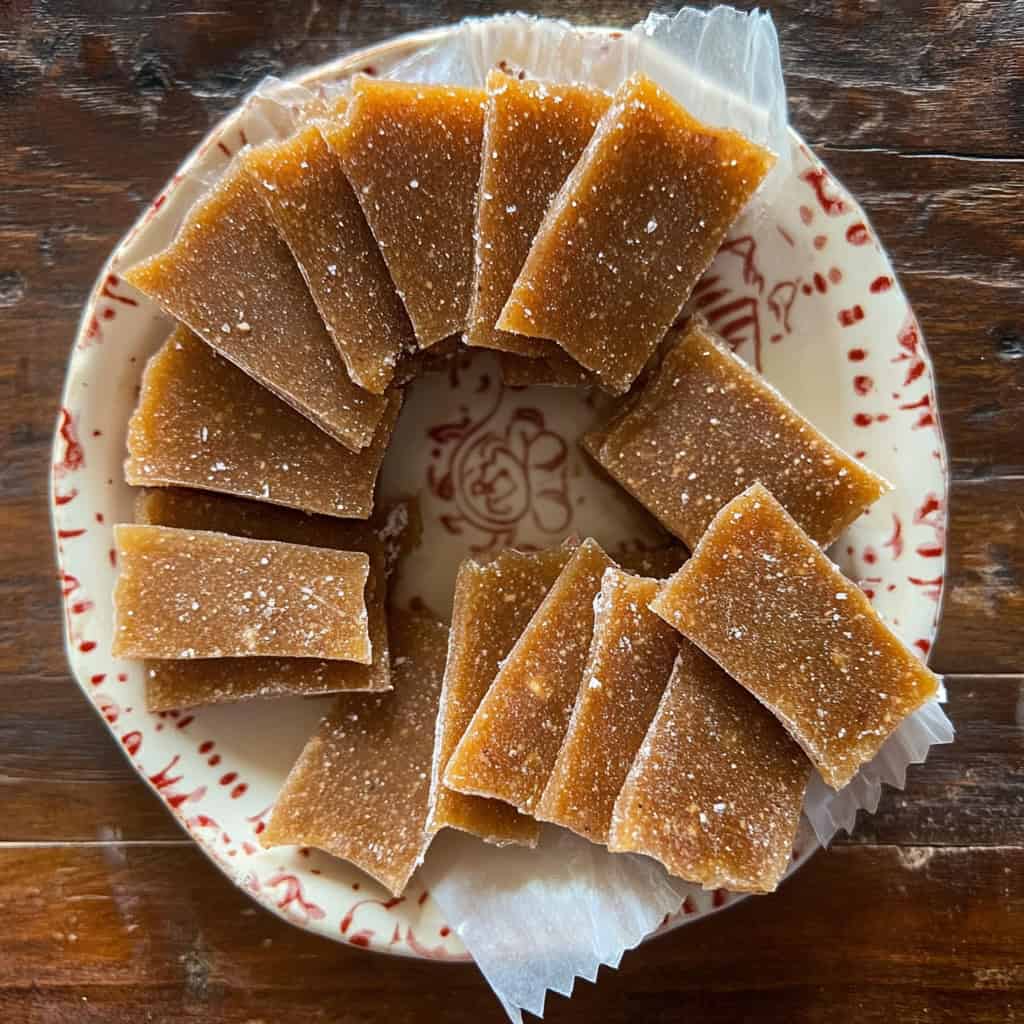
Why You'll Love This Recipe
- Authentically Filipino with just 3-4 main ingredients
- Budget-friendly yet delicious homemade candy
- Perfect blend of sweet potato, coconut, and caramel flavors
- Makes a thoughtful homemade gift
- Can be made in under an hour
- No fancy equipment needed
- Naturally gluten-free
Ingredients
These ingredients create the perfect Filipino molido because they complement each other beautifully. Sweet potatoes provide a natural sweetness and hearty base, while fresh coconut adds tropical richness and texture. Muscovado sugar creates a deep caramel flavor that can't be achieved with regular sugar.
The optional pandan leaves and vanilla extract enhance the aroma, making this simple combination truly special without requiring expensive or hard-to-find ingredients.
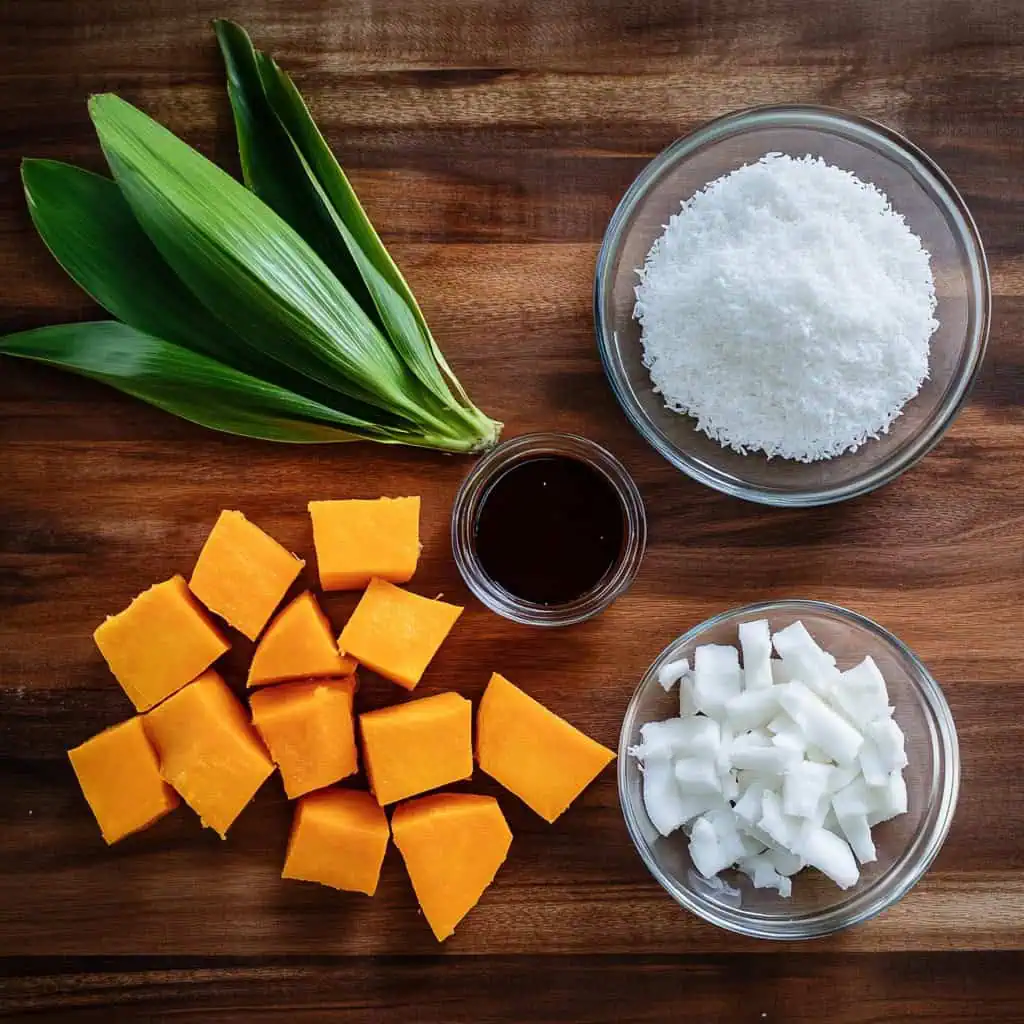
- 500g sweet potatoes (kamote), peeled and cubed
- 500g fresh grated coconut (niyog)
- 500g brown sugar or muscovado sugar (asukal na pula)
- 2 pcs pandan leaves (optional) - Adds a pleasant aroma and subtle flavor
- 2-3 drops vanilla extract (optional) - Enhances the overall sweetness
Equipment
- Medium cooking pan (kawali) - For cooking and caramelizing the mixture while providing even heat distribution
- Wooden spoon (sandok na kahoy) - For constant stirring without scratching the pan and to maintain the traditional cooking method
- Potato masher or fork - For thoroughly mashing cooked sweet potatoes to ensure a smooth texture
- Square baking pan or plate - For molding and setting the candy into a uniform shape
- Measuring cups - For accurate ingredient portions to maintain recipe consistency
- Sharp knife - For cutting the set mixture into neat serving pieces
- Wax paper - For lining surfaces and preventing sticking during cooling
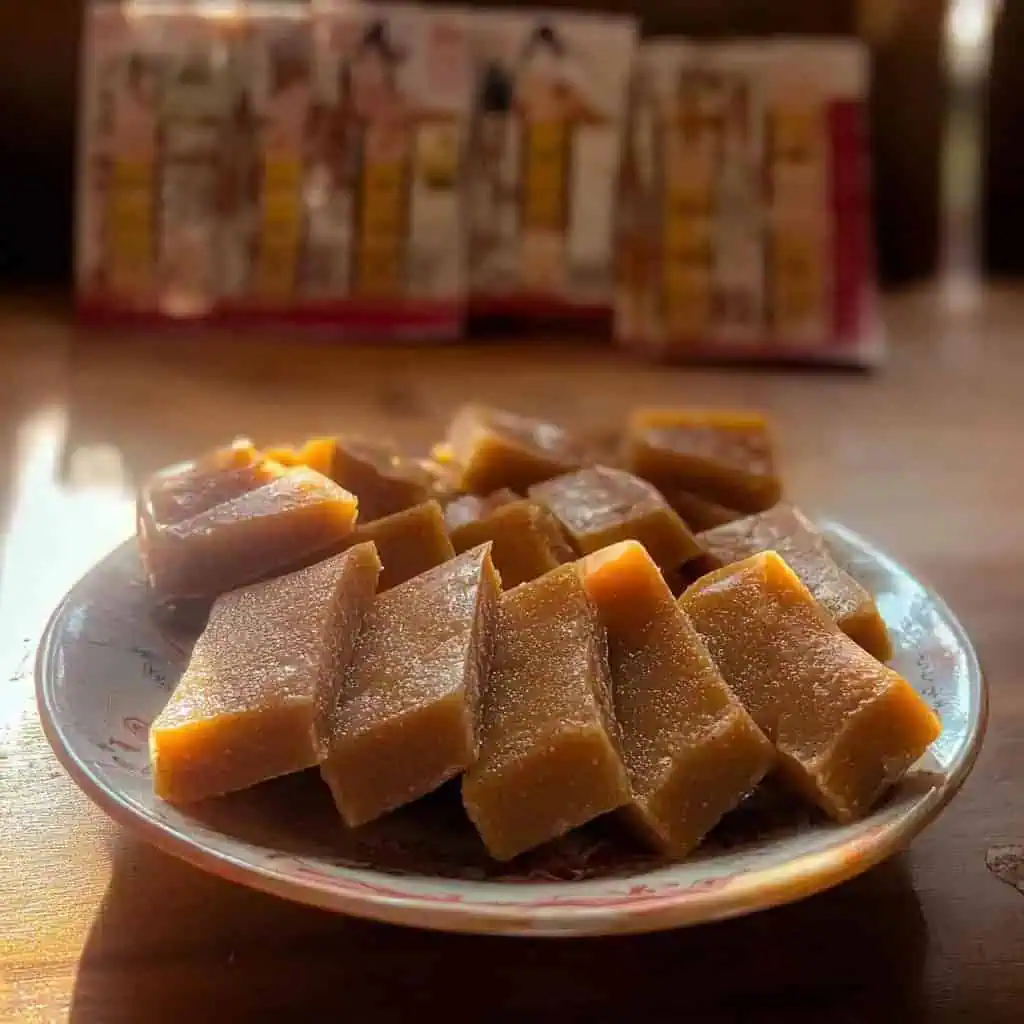
How To Make
- Boil sweet potato in a pot filled with water until very tender and easily pierced with a fork, about 15-20 minutes at medium-high heat (100°C/212°F). Drain and peel while still hot.
- Mash the hot kamote until completely smooth with no lumps. Add freshly grated coconut and mix well until fully combined.
- In a heavy-bottomed pan over medium heat (170°C/338°F), combine the muscovado sugar with 2 tablespoons of water. Allow to melt and caramelize until it reaches a deep amber color, about 5-7 minutes.
- Add the kamote-coconut mixture to the caramelized sugar. Stir continuously over medium-low heat (150°C/302°F) until the mixture becomes thick and starts to pull away from the sides of the pan, approximately 10-12 minutes.
- Transfer the mixture to a flat surface lined with wax paper. Allow to cool slightly until comfortable to handle but still warm enough to shape, about 5-8 minutes.
- Roll the mixture to ½ inch thickness and cut into desired shapes. Alternatively, form into small balls and flatten slightly. Let cool completely at room temperature.
- Store in an airtight container lined with wax paper, placing paper between layers to prevent sticking. The molido will keep for up to a week at room temperature or two weeks when refrigerated.

Tips from Lola's Kitchen
- Use purple sweet potatoes for a beautiful color variation and subtle flavor difference
- Stir in one direction only for better texture and consistency
- The mixture is ready when it starts making a slight squeaking sound against the pan
- Grease your knife with coconut oil for cleaner cuts and professional-looking pieces
- Test doneness by dropping a small amount in cold water - it should form a soft ball that holds its shape
- Allow the caramel to reach an amber color for the richest flavor, but watch carefully to prevent burning
- Don't rush the cooking process - slow caramelization develops the best flavor
- Line your containers with wax paper between layers for easy removal and storage
- Cool completely before storing to prevent moisture buildup and preserve texture
Substitutions
- Sweet Potato: Purple yam (ube) can be used for a different flavor profile and beautiful purple color
- Brown Sugar: White sugar + 1 tablespoon molasses will work if muscovado isn't available
- Fresh Coconut: Desiccated coconut (rehydrated in warm water for 10 minutes) can substitute in a pinch
- Pandan Leaves: ¼ teaspoon pandan extract will provide similar aroma and flavor
- Muscovado Sugar: Palm sugar or coconut sugar can be used for a different but complementary flavor
Troubleshooting
Mixture Too Soft:
- Continue cooking until the mixture thickens properly
- Ensure sweet potatoes were well-drained before mashing
- The mixture might need more time to caramelize and reduce moisture
Mixture Too Hard:
- The mixture was likely overcooked
- Next time, reduce cooking time or lower the heat
- Add 1-2 teaspoons of water while still warm to soften slightly
Grainy Texture:
- Sugar wasn't completely dissolved before adding other ingredients
- Stir more thoroughly during the caramelization process
- Make sure to mash sweet potatoes thoroughly while still hot
Candy Not Setting Properly:
- Insufficient cooking time - return to pan and cook longer
- Too much moisture in coconut - use drier coconut or cook longer
- Temperature too low during cooking - increase heat slightly
Storage & Reheating
- Room Temperature: Keeps for 2-3 days in an airtight container
- Refrigerated: Stays fresh up to 1 week in an airtight container
- Freezer: Can be frozen for up to 1 month (wrap individual pieces in wax paper)
- To Soften: Leave refrigerated molido at room temperature for 30 minutes before serving
- Prevent Drying: Place a small piece of bread in the container to maintain moisture
- Layering: Always place wax paper between layers to prevent sticking
- Avoid Moisture: Keep away from humid environments to maintain texture
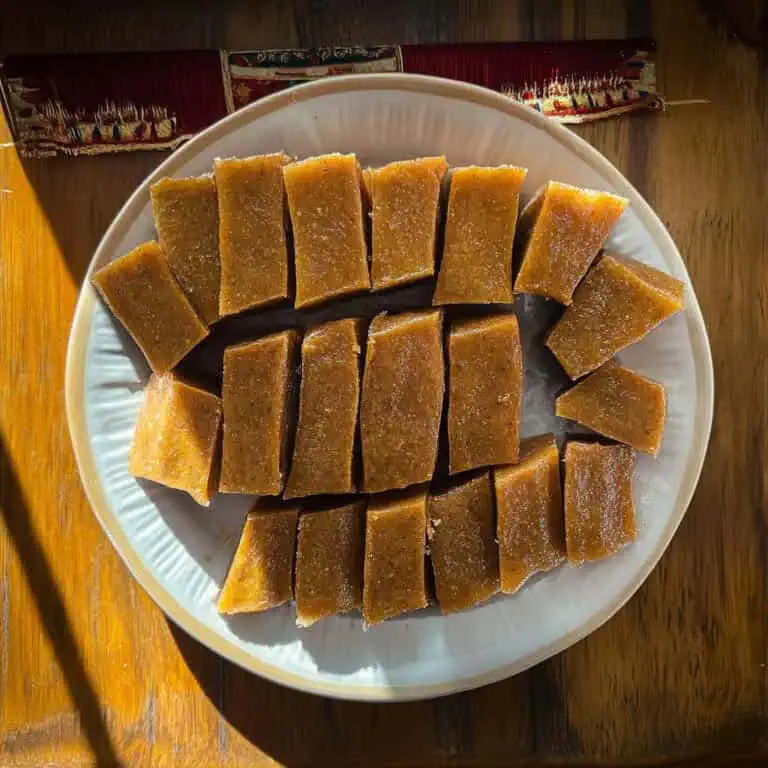
FAQ
Why is my molido not setting?
The mixture might need more cooking time. Cook until it reaches a thick, paste-like consistency that pulls away from the sides of the pan. Proper reduction of moisture is key to achieving the right setting texture.
Can I reduce the sugar?
Yes, but reduce by maximum 20% to maintain proper texture and preservation properties. The sugar is essential not just for sweetness but also for the candy's structure.
How do I know when it's done cooking?
The mixture should be golden brown, pull away from the pan sides, and make a slight squeaking sound when stirred. A small amount dropped in cold water should form a soft ball that holds its shape.
Can I make this ahead for a party?
Yes, store in an airtight container for up to a week. Make it 1-2 days before your event for the freshest taste and texture.
Which type of sweet potato works best?
Orange-fleshed sweet potatoes are traditional, but white or purple varieties work well too. Each provides a slightly different flavor and color.
My molido is too sticky to handle. What went wrong?
It wasn't cooked long enough to reduce moisture. Return it to the pan and cook longer, stirring constantly until it thickens more.
Can I use an electric mixer instead of hand-mashing?
Yes, but be careful not to over-mix, which can make the texture gummy. Pulse gently until just smooth.
Is this recipe suitable for people with dietary restrictions?
The recipe is naturally gluten-free and can be made vegan by ensuring the sugar used is not processed with bone char.
Related
Looking for other recipes like this? Try these:
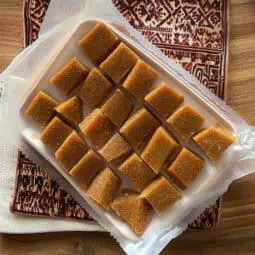
Molido (Sweet Potato Candy)
Equipment
- Medium cooking pan (kawali) for cooking and caramelizing the mixture
- Wooden spoon (sandok na kahoy) for constant stirring without scratching the pan
- Potato masher or fork for mashing cooked sweet potatoes
- Square baking pan or plate for molding and setting
- Measuring cups for accurate ingredient portions
- Sharp knife for cutting into serving pieces
Ingredients
- 500 g sweet potatoes kamote, peeled and cubed
- 500 g fresh grated coconut niyog
- 500 g brown sugar or muscovado sugar asukal na pula
- 2 pcs pandan leaves dahon ng pandan - optional
- 2-3 drops vanilla extract - optional
Instructions
- Boil sweet potato in a pot filled with water until very tender and easily pierced with a fork, about 15-20 minutes at medium-high heat (100°C/212°F). Drain and peel while still hot.
- Mash the hot kamote (durugin ang mainit na kamote) until completely smooth with no lumps. Add freshly grated coconut (niyog) and mix well until fully combined.
- In a heavy-bottomed pan over medium heat (170°C/338°F), combine the muscovado sugar (asukal na pula) with 2 tablespoons of water. Allow to melt and caramelize until it reaches a deep amber color, about 5-7 minutes.
- Add the kamote-coconut mixture to the caramelized sugar. Stir continuously over medium-low heat (150°C/302°F) until the mixture becomes thick and starts to pull away from the sides of the pan, approximately 10-12 minutes.
- Transfer the mixture to a flat surface lined with wax paper (papel de sera). Allow to cool slightly until comfortable to handle but still warm enough to shape, about 5-8 minutes.
- Roll the mixture to ½ inch thickness and cut into desired shapes. Alternatively, form into small balls and flatten slightly. Let cool completely at room temperature.
- Store in an airtight container lined with wax paper, placing paper between layers to prevent sticking. The molido will keep for up to a week at room temperature or two weeks when refrigerated.
Tips from Lola's Kitchen
- Use purple sweet potatoes (ube) for a beautiful color variation
- Stir in one direction only for better texture
- The mixture is ready when it starts making a slight squeaking sound against the pan
- Grease your knife with coconut oil for cleaner cuts
- Test doneness by dropping a small amount in cold water - it should form a soft ball
Nutrition
The Story Behind Molido
Long before imported sweets filled Filipino candy stores, molido (also known as mazapan) was a cherished homemade treat that spoke volumes about Filipino ingenuity and resourcefulness. This traditional sweet potato candy emerged from the kitchens of rural Philippines, particularly in the provinces of Samar, Quezon, and the Bicol region, where families transformed humble root crops into delightful confections.
The creation of molido reflects the Filipino tradition of 'harana sa kusina' - making something extraordinary from ordinary ingredients. Sweet potatoes, abundant in Philippine soil and often considered poor man's fare, were elevated into a prestigious homemade candy when combined with freshly grated coconut and muscovado sugar. The name 'molido' itself comes from the Spanish word 'moler,' meaning 'to grind' or 'to mill,' referring to the process of mashing the sweet potatoes until smooth.
During the pre-war era and well into the 1960s and 1970s, molido became a staple of Filipino merienda (afternoon snack) culture. Local mothers and grandmothers would prepare these sweets not just for their families but also for town fiestas and special occasions. The candy-making process became a communal activity, with neighbors sharing freshly grated coconuts and exchanging tips on achieving the perfect caramelization.
Today, while modernization has brought countless candy options to even the most remote sari-sari stores, molido remains a symbol of Filipino culinary heritage. Its continued popularity, especially in rural areas, demonstrates how deeply rooted this sweet treat is in Philippine culture. Many Filipino families still preserve their own versions of the recipe, passed down through generations, each adding their own special touch - whether it's a hint of pandan, a splash of vanilla, or a special way of cutting and wrapping the candies.
In recent years, there's been a revival of interest in traditional Filipino sweets like molido, as younger generations seek to connect with their culinary roots and appreciate the sustainable, natural ingredients used in these time-honored recipes. Food historians and cultural preservationists have documented various regional variations of molido, highlighting its significance in Philippine food heritage and its role in sustainable, local food traditions.
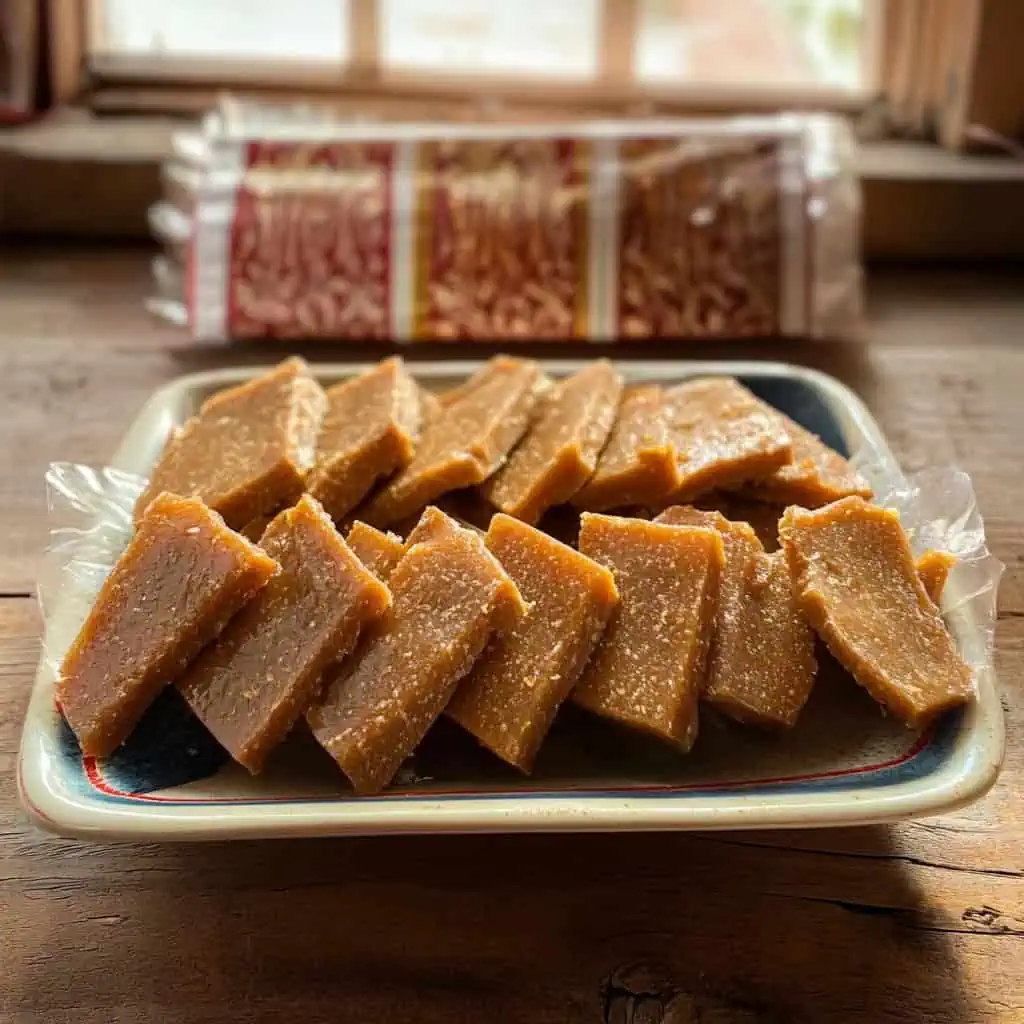

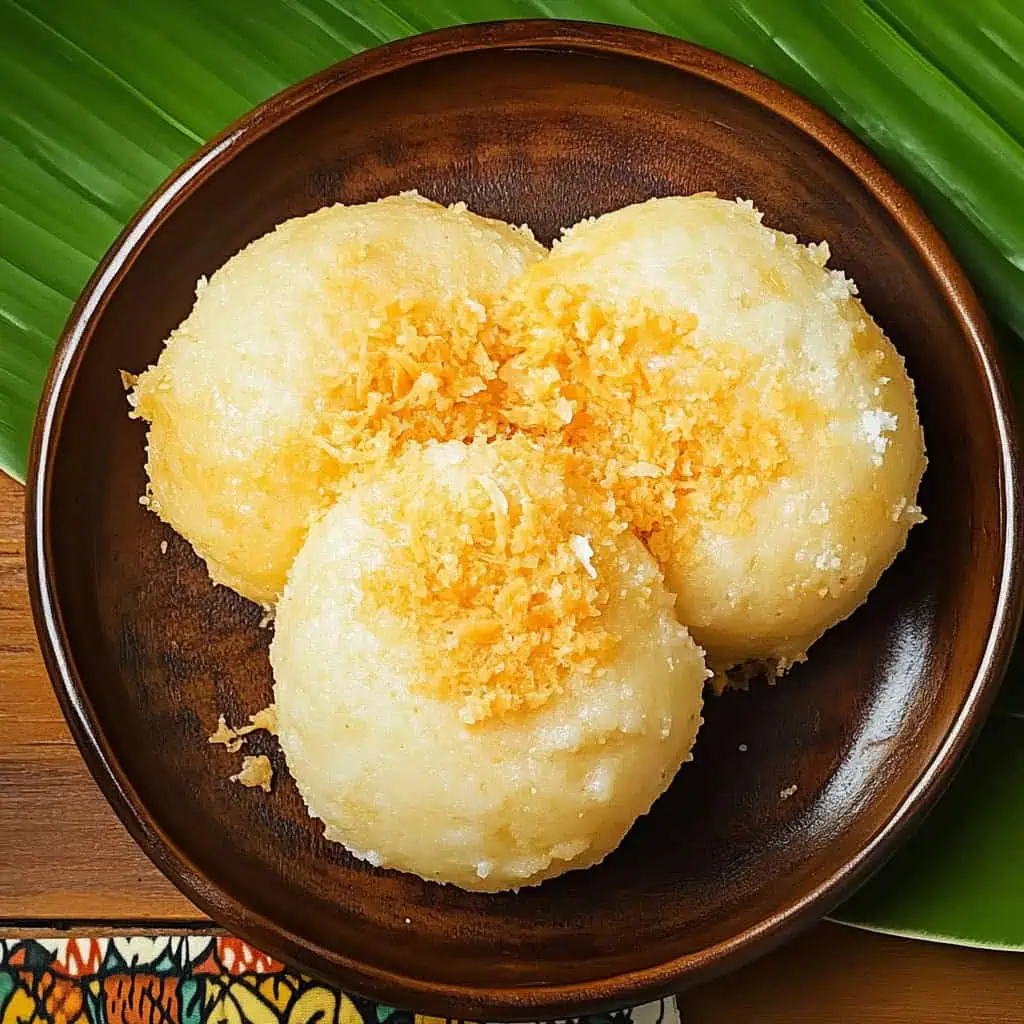
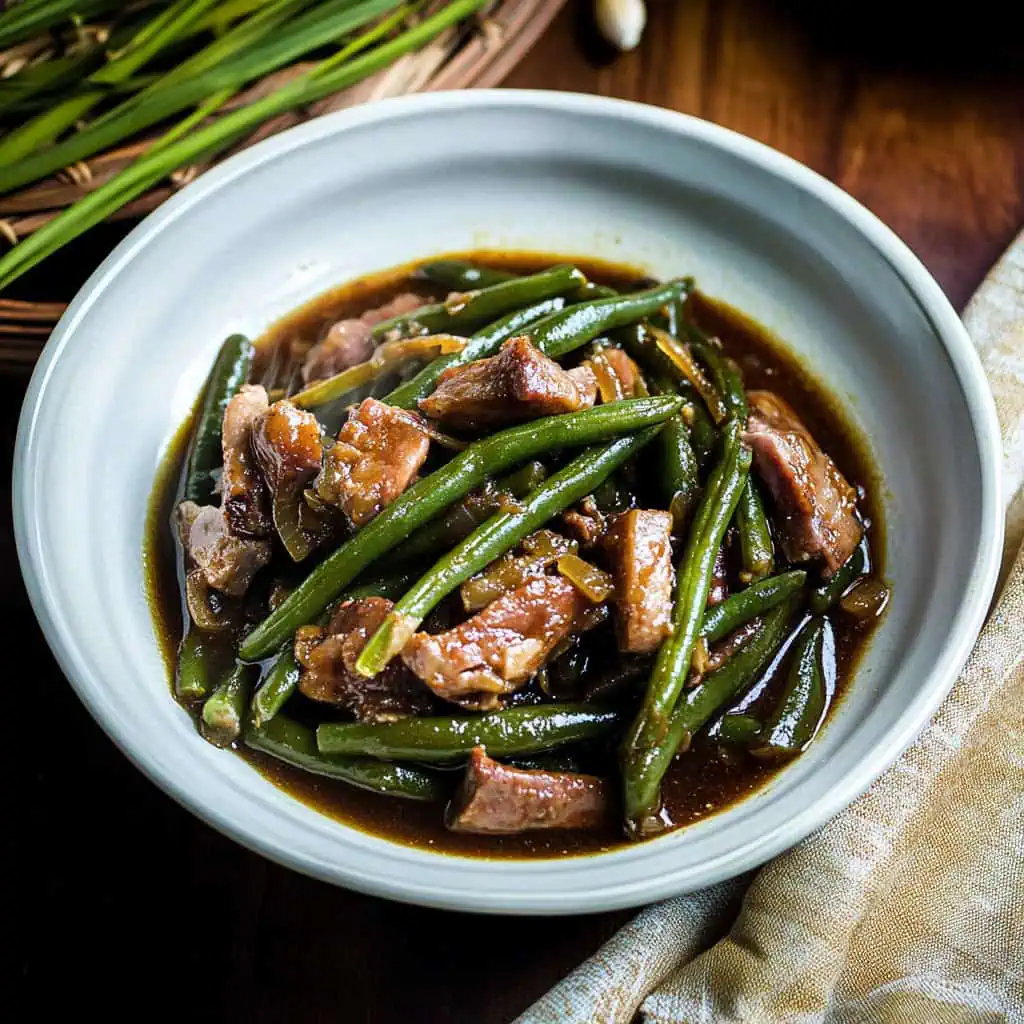

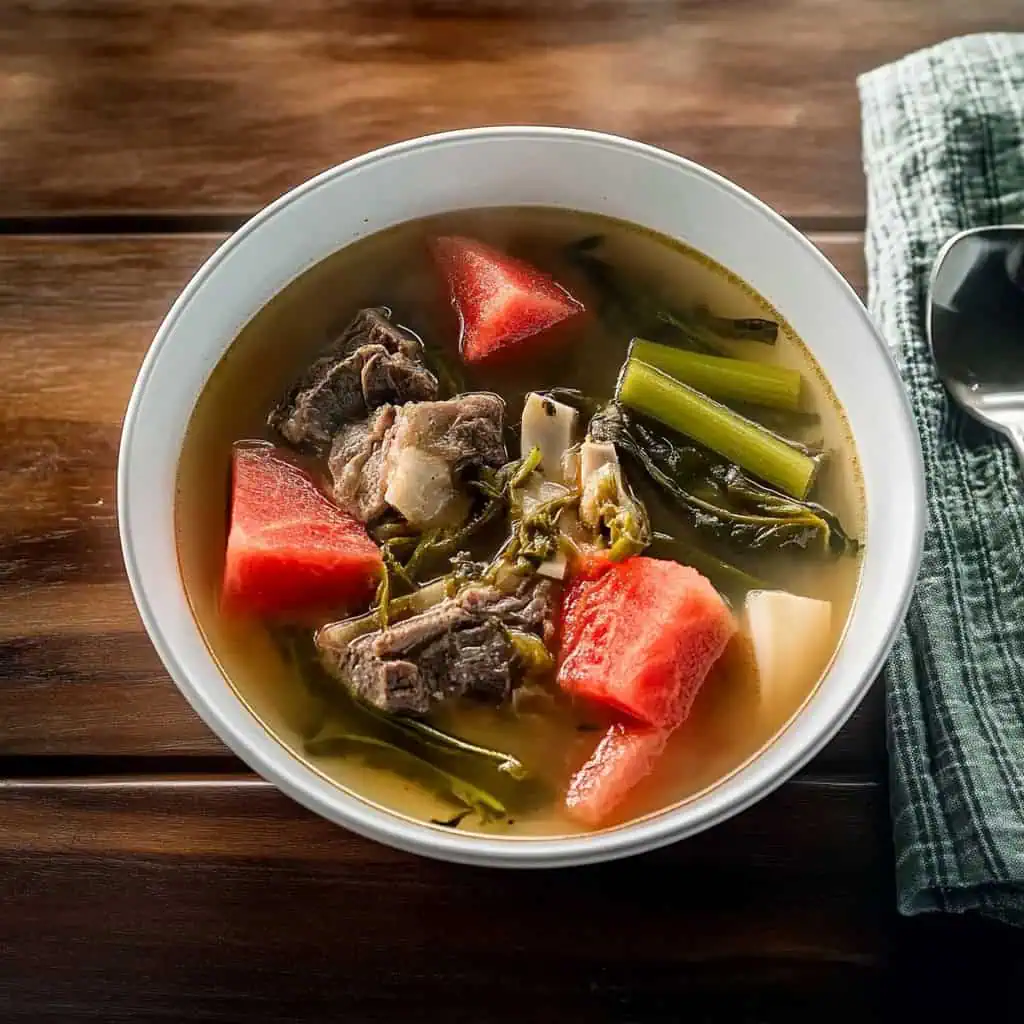


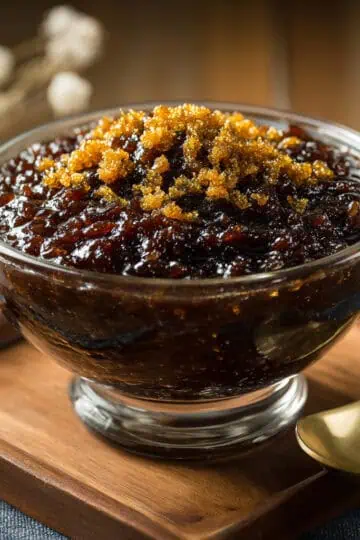
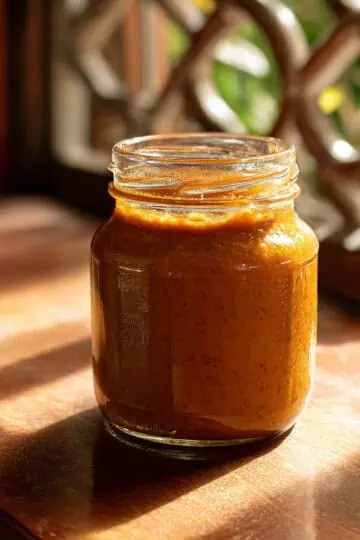
Comments
No Comments